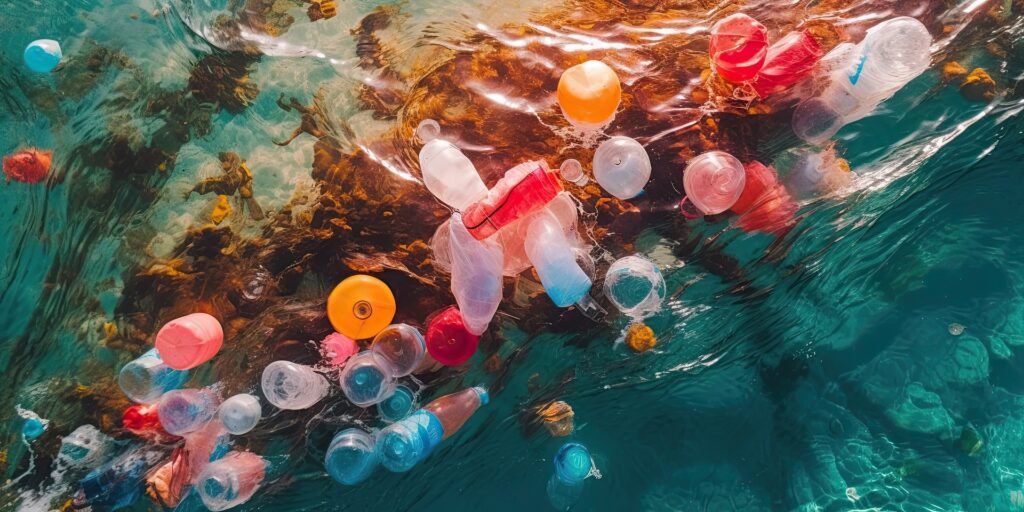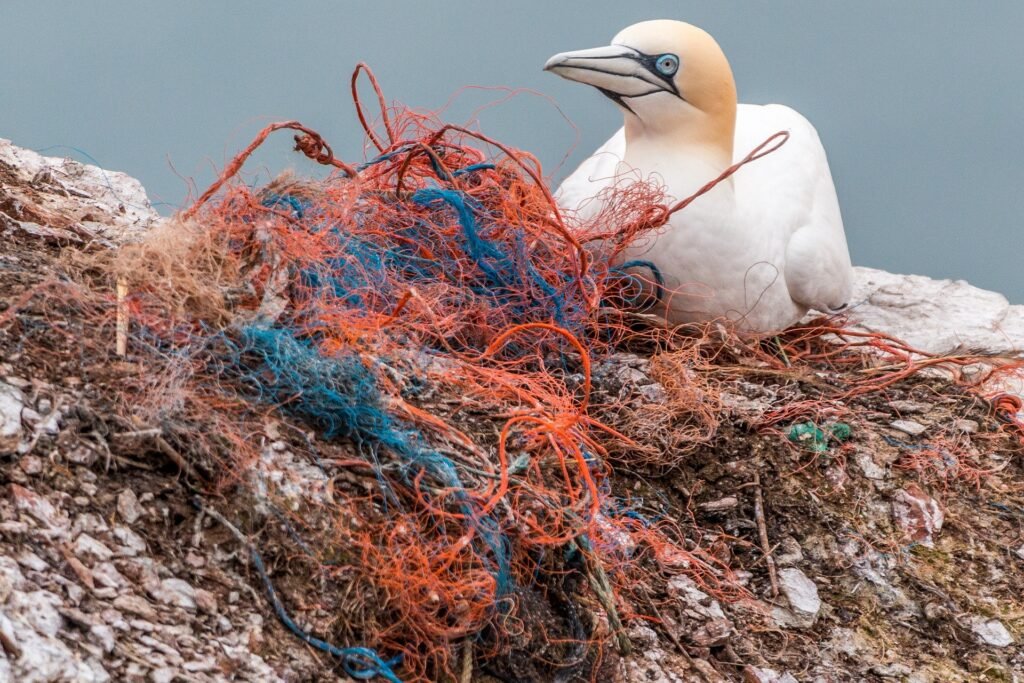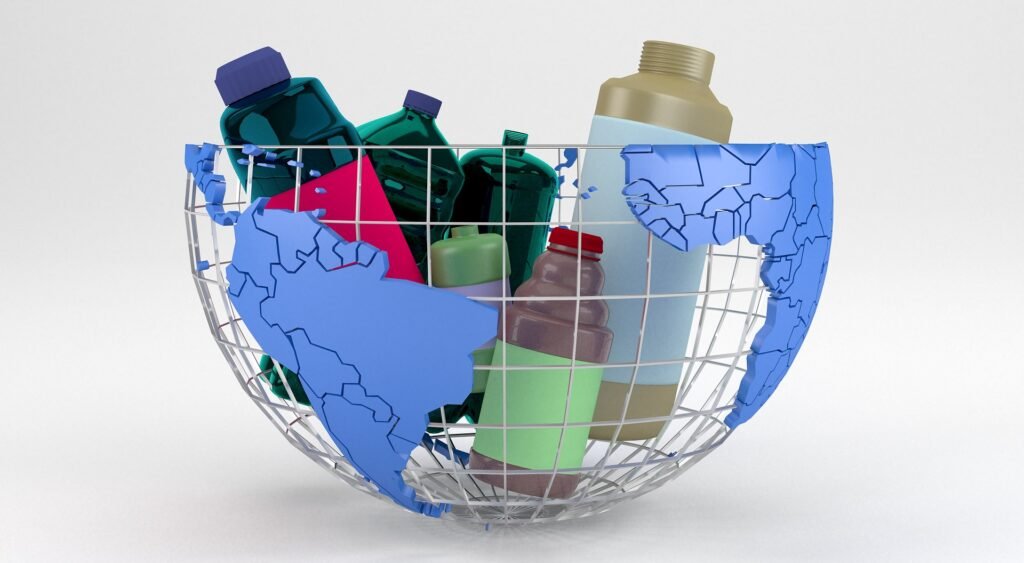While sipping through a plastic straw one day, I wondered if paper straws might be a better environmental choice. I realized swapping plastic straws for paper ones still leads to a single-use, disposable item. I realized the more sustainable approach would be to use a reusable straw or skip it when unnecessary.
The environmental crisis associated with single-use plastics has become a pressing global issue. These plastics, designed for convenience in everyday items such as straws, bags, bottles, and packaging, have turned into a significant ecological threat. Plastic waste is choking our oceans, rivers, and landscapes, endangering wildlife and disrupting ecosystems. As we strive for more sustainable living, it’s crucial to explore and adopt alternatives to reduce our reliance on single-use plastics. By choosing eco-friendly options, we can cut down on waste, protect natural resources, and contribute to a healthier planet. This article explores various sustainable alternatives to single-use plastics, highlighting the importance of smart living choices that benefit both humanity and the environment. Be part of the movement toward a more sustainable, greener future.
The Hidden Dangers of Single-Use Plastics
Environmental Impact
Single-use plastics pose significant environmental challenges. They take centuries to decompose and never disappear, instead breaking down into microplastics that infiltrate our soil, waterways, and even the air we breathe. Petrochemicals are the source of these plastics, and their production contributes to greenhouse gas emissions. Items like plastic bags, straws, bottles, and packaging accumulate in landfills, oceans, and natural habitats, causing extensive environmental damage.
1. Waste Management
The sheer volume of single-use plastics produced and discarded is staggering. Billions of plastic bottles, straws, cups, and food containers are used and thrown away each year, leading to a massive waste management issue that strains our landfills and recycling systems.
2. Ocean Pollution
Each year, millions of tons of plastic waste end up in our oceans, creating massive garbage patches like the Great Pacific Garbage Patch. Marine life, including fish, birds, and mammals, often ingests or becomes entangled in plastic debris, leading to severe injury, suffocation, and death.

3. Soil and Water Contamination
As plastics break down into microplastics, they contaminate soil and water systems. These tiny particles are challenging to remove and can enter the food chain, posing health risks to both humans and animals.
4. Resource Depletion
Producing single-use plastics depletes significant amounts of natural resources, including petroleum and natural gas, further exhausting our non-renewable resources.
5. Wildlife Harm
Animals ingest plastic or become entangled, resulting in injury or death.

6. Carbon Footprint
Plastic production and disposal are significant contributors to greenhouse gas emissions.
7. Human Health Risks
Plastics contain harmful chemicals such as BPA and phthalates, which can leach into food and beverages, posing significant health risks.
Economic Costs
Managing plastic waste imposes a considerable economic burden. Governments and local municipalities spend billions on waste management and cleanup efforts. The impact on tourism, fisheries, and other industries reliant on a clean environment can be severe, leading to loss of income and jobs.
Eco-Friendly Solutions to Single-Use Plastics
Transitioning to sustainable alternatives involves rethinking product design, consumer habits, and waste management systems. Here are some eco-friendly alternatives to single-use plastics that prioritize environmental stewardship without sacrificing convenience:
1. Biodegradable and Compostable Plastics
The purpose of biodegradable and compostable plastics is to break down more quickly than conventional plastics. Often made from renewable sources like cornstarch, sugarcane, and potato starch, these materials may not degrade in marine environments and can complicate recycling processes if disposed of incorrectly.
Compostable plastics are a subset of biodegradable plastics that break down into non-toxic components, enhancing soil quality. These plant-based materials include PLA (polylactic acid) and PHA (polyhydroxyalkanoates). PLA, derived from fermented plant starch, decomposes into water and carbon dioxide under industrial composting conditions. PHA, produced by fermenting sugars, is used for items like food packaging and disposable cutlery and is biodegradable in both marine and soil environments. However, effective composting facilities are required to manage these materials, and compostable products can be more expensive to produce than conventional plastics.
- PLA (Polylactic Acid): Derived from fermented plant starch (usually corn), PLA is used in products like cups, straws, and packaging. It decomposes into water and carbon dioxide under industrial composting conditions.
- PHA (Polyhydroxyalkanoates): Microbes ferment sugars to produce PHA, which is used for items like food packaging and disposable cutlery. It is fully biodegradable and compostable in both marine and soil environments.
While these alternatives reduce the persistence of plastics in the environment, it is crucial to ensure proper composting facilities are available to handle these materials.
2. Edible Packaging
Edible packaging provides an innovative solution to single-use plastics by offering packaging that can be consumed along with the product it contains. Examples include:
· Seaweed-Based Packaging: Companies like Evoware have developed seaweed-based packaging that is edible, biodegradable, and nutritious. This packaging is ideal for wrapping food items like burgers and sandwiches.
· Rice and Potato Starch Wraps: These wraps are not only edible but also provide a barrier against moisture and air, making them suitable for packaging perishable goods.
While these alternatives offer promising solutions, it’s important to recognize that not all products are suitable for edible packaging.
3. Reusable Products: A Key Strategy for Reducing Single-Use Plastics

Promoting reusable products is one of the most effective strategies to combat single-use plastics. Embracing reusable items not only reduces waste but also encourages a culture of sustainability.
. Reusable Bags
Say goodbye to flimsy plastic shopping bags and opt for reusable alternatives. Cloth bags, tote bags, and mesh produce bags made from organic or recycled materials offer durable and sustainable options for carrying groceries and other purchases. These bags are sturdy, washable, and reusable, making them a practical choice for reducing plastic waste.
. Reusable Bottles and Cups
Switching to stainless steel, glass, or BPA-free plastic bottles and cups can cut down on disposable versions. Many coffee shops and cafes even offer discounts to customers who bring their reusable cups. This simple switch helps to minimize waste and supports eco-friendly practices.
. Other Reusable Items
Consider using metal or glass straws, bamboo cutlery, and beeswax wraps as replacements for their disposable counterparts. Beeswax-coated cloth wraps are an excellent alternative to plastic wraps for food storage. They are washable, reusable, and biodegradable, providing an eco-friendly way to keep your food fresh.
. Food Storage Solutions

Choose alternatives to plastic food storage, like glass containers, stainless steel lunchboxes, or silicone food bags for a safer and more eco-friendly option,. These choices are reusable and free from harmful chemicals that could leach into your food. They offer a healthier and more sustainable way to store your meals.asting. However, shifting consumer behavior to use reusable products can be difficult, and the initial cost of reusable items is high, though mitigated over time by repeated use.
4. Plant-Based Materials
Materials like bamboo, hemp, and palm leaves are gaining popularity as sustainable alternatives to single-use plastics. Bamboo straws, hemp bags, and palm leaf plates are biodegradable and sourced from renewable resources, making them excellent substitutes for conventional plastics. While these materials are compostable and environment-friendly, their production may involve high water usage, and availability might be limited in some regions.
5. Silicone Products
Silicone, known for its flexibility and durability, is used to make reusable items such as food storage bags, baking mats, and straws. It withstands extreme temperatures and can be recycled at the end of its lifecycle. Although silicone products are durable and heat-resistant, they are not biodegradable, and recycling facilities for silicone are still limited.
Alternative Materials
Innovative materials are emerging as replacements for traditional plastics. Here are a few examples:
Bamboo: A fast-growing, renewable resource, bamboo is used to make various products including cutlery, toothbrushes, and straws.
Paper and Cardboard: Paper and cardboard are traditional materials that can replace plastic in many applications. Modern advancements have made these materials more durable and water-resistant, suitable for packaging, straws, and utensils. They are biodegradable and recyclable, though their production can require significant water and energy.
Glass: Glass containers and bottles are durable and can be recycled without a loss in quality. They are perfect for storing food, beverages, and personal care products.
Conscious Consumerism
Mindful shopping is crucial for reducing our reliance on single-use plastics and fostering a sustainable lifestyle. By making intentional choices and considering the environmental impact of our purchases, we can contribute to a greener future. Here are some tips for more conscious shopping:
, Bring Your Own Bags (BYOB): Always carry reusable shopping bags to avoid using single-use plastic bags provided by stores. Opt for sturdy, reusable cloth or tote bags that can handle your purchases.
, Bulk Buying and Refill Stations: Seek stores that offer bulk buying options or refill stations for items like cleaning products, pantry staples, and personal care products. Buying in bulk or refilling containers can reduce plastic packaging waste.
. Choose Products with Minimal Packaging: Prioritize products with minimal or eco-friendly packaging. Look for items wrapped in recyclable materials such as cardboard, paper, or glass. Avoid products with excessive plastic wrap or unnecessary packaging to reduce waste and promote sustainability.
. Choose Fresh and Local: When grocery shopping, opt for fresh, local-sourced produce. Supporting local farmers and markets helps reduce the carbon footprint associated with long-distance transportation and packaging.
. Support Sustainable Brands: Research and support brands dedicated to sustainable practices. Choose companies that use eco-friendly packaging, provide reusable options, and prioritize environmental responsibility across their supply chain.
. Minimize Single-Use Items: Be mindful of items that are used once and discarded. Seek reusable alternatives for water bottles, coffee cups, straws, and cutlery. Investing in high-quality reusable items reduces waste and saves money.
. Repair and Repurpose: Instead of replacing broken or worn-out items, explore repair options. Repairing and repurposing items extends their lifespan, reducing the need for new purchases and associated plastic packaging.
. Educate Yourself and Others: Stay informed about the environmental impact of single-use plastics and share this knowledge with others. Engage in conversations about sustainability, raise awareness, and inspire friends and family to make eco-conscious choices.
. Say No to Plastic: When offered plastic bags, straws, or utensils, decline and use your reusable alternatives. Keep a set of reusable cutlery, straws, and containers handy when you’re on the go.
Conscious consumerism is an ongoing effort that involves making minor changes and being aware of the impact our choices have on the environment. By shopping, we can reduce single-use plastics and foster an eco-friendlier consumer culture. Together, our collective efforts can lead to a healthier and more sustainable world.
Raising Awareness
Raising awareness about single-use plastics and the importance of sustainable living is essential for driving meaningful change. By sharing knowledge and inspiring others to take action, we can create a ripple effect toward a more sustainable future. Here are effective ways to raise awareness:
. Social Media Campaigns: Use social media to highlight the issues with single-use plastics and promote sustainable alternatives. Share informative posts, impactful visuals, and engaging statistics that showcase the environmental impact of plastic waste. Encourage others to join the conversation and advocate for sustainable practices.
. Engage in Community Events: Take part in local events, workshops, or seminars focused on sustainability and environmental conservation. Collaborate with organizations to organize awareness campaigns, beach clean-ups, or recycling drives. These activities educate the public and foster a collective responsibility for our planet.
, Write Blogs or articles: Contribute to sustainability-focused blogs or local publications to reach a broader audience. Share your experiences, knowledge, and tips for reducing plastic waste. Discuss topics such as sustainable shopping, eco-friendly lifestyle choices, and the environmental impact of single-use plastics.
. Organize Educational Workshops: Host workshops or presentations at schools, community centers, or workplaces to inform people about the harmful effects of single-use plastics. Offer practical advice on adopting sustainable practices, such as reducing plastic consumption, recycling correctly, and using reusable alternatives. Foster interactive discussions and share resources for continued learning.
. Collaborate with Influencers and Ambassadors: Partner with influencers, eco-conscious personalities, or local sustainability ambassadors who align with your values. Collaborate on joint campaigns, podcasts, or interviews to reach a wider audience and amplify the message of sustainable living.
, Support and Promote Eco-Friendly Businesses: Highlight businesses that prioritize sustainable practices and eco-friendly alternatives. Share reviews and recommendations about sustainable products, packaging, or initiatives. Supporting these businesses helps create demand for sustainable options and encourages others to make conscious choices.
, Be a Role Model: Lead by example by adopting sustainable practices and reducing your plastic footprint. Use reusable items, recycle, and seek sustainable alternatives. Your actions can inspire others and show the feasibility and impact of sustainable living.
. Engage in Conversations: Start discussions about single-use plastics and sustainability within your personal and professional circles. Share your knowledge and encourage others to rethink their habits and choices. By fostering dialogue, you can inspire positive changes in others.
Raising awareness is a continuous effort. By engaging with others, using various communication channels, and advocating for sustainable living, we can contribute to a collective shift in mindset and behavior. Together, we can minimize single-use plastics and make sustainable alternatives the norm.
Smart Living Practices: Enhancing Sustainability Through Holistic Approaches
Embracing sustainable alternatives is only a step toward a complete solution. Embracing smart living practices can amplify the impact of these alternatives and promote a holistic approach to sustainability.
. Reducing and Reusing
The mantra “reduce, reuse, recycle” highlights the importance of minimizing waste. By cutting down consumption and reusing items, we can decrease plastic waste. For instance, using reusable containers and repurposing old items can make a substantial difference.
. Mindful Consumption
Assessing needing purchases and opting for products with minimal or no plastic packaging can help reduce plastic waste. Bulk buying and choosing items with longer lifespans are effective strategies for more sustainable consumption.
. Repair and Repurpose
Repairing broken items and repurposing old ones can extend their life and decrease the need for new products. Reusing glass jars for storage and converting old clothes into cleaning rags shows how simple practices can contribute to sustainability.
Recycling and Waste Management
Proper recycling and waste management are crucial for dealing with unavoidable plastic waste. Improving recycling infrastructure and boosting public awareness are key to increasing recycling rates.

. Efficient Sorting
When we implement effective waste sorting systems at home and in public spaces, we ensure recyclable materials are properly processed. Clear labeling and recycling education are essential for improving recycling practices.
. Community Initiatives
Community-led efforts, such as plastic-free markets, beach cleanups, and recycling drives, foster collective action to reduce plastic waste. These initiatives not only help clean the environment but also raise awareness about sustainability.
Innovations and Future Directions
The quest for sustainable alternatives to single-use plastics has spurred innovation across various fields. Ongoing research and development are crucial for discovering new materials and enhancing existing ones.
. Advanced Materials
Researchers are exploring advanced materials that offer the benefits of plastics without the environmental drawbacks. Promising developments include:
. Cellulose-Based Plastics: Derived from plant fibers, these plastics are biodegradable and suitable for packaging and coatings.
- . Chitosan: Made from chitin in crustacean exoskeletons, chitosan is biodegradable and has antimicrobial properties, ideal for food packaging.
. Biodegradation Technologies
Innovations in biodegradation technologies aim to improve plastic decomposition in natural environments. Key areas include:
- . Enzyme-Based Degradation: Enzymes that can break down plastics, such as those produced by certain bacteria, are being developed.
. Microbial Degradation: Using bacteria and fungi to decompose plastics is a promising research area with the potential for environmental impact.
Policy and Regulation
Policies play a significant role in influencing consumer and corporate behavior. Effective regulation can speed up adopting sustainable alternatives and reduce plastic waste.
. Bans and Restrictions
Many countries have introduced bans or restrictions on single-use plastics, including:
. Plastic Bag Bans: Various regions have banned plastic bags or imposed levies, encouraging the use of reusable bags.
. Straw Bans: Bans on plastic straws in several areas have led businesses to offer paper or metal alternatives.
. Extended Producer Responsibility (EPR)
EPR policies hold manufacturers accountable for the lifecycle of their products, including disposal and recycling. EPR drives innovation and encourages the design of more sustainable products.
. Packaging Regulations: Regulations that require recyclable or biodegradable materials can reduce plastic waste and push for sustainable packaging solutions.
. Deposit Return Schemes: These schemes increase recycling rates by offering refunds for returned containers, enhancing recycling efforts.
Research shows that buying unpackaged fruit and vegetables instead of pre-packaged options can reduce food waste and plastic use. For example, selling apples, bananas, and potatoes loose could save 60,000 tons of food waste and reduce plastic packaging by 8,800 tons per year, saving over 80,000 tons of CO2.
Transitioning to sustainable smart living requires a multifaceted approach. By integrating biodegradable and compostable plastics, edible packaging, reusable products, and alternative materials, we can reduce our reliance on single-use plastics and foster a more sustainable future.

